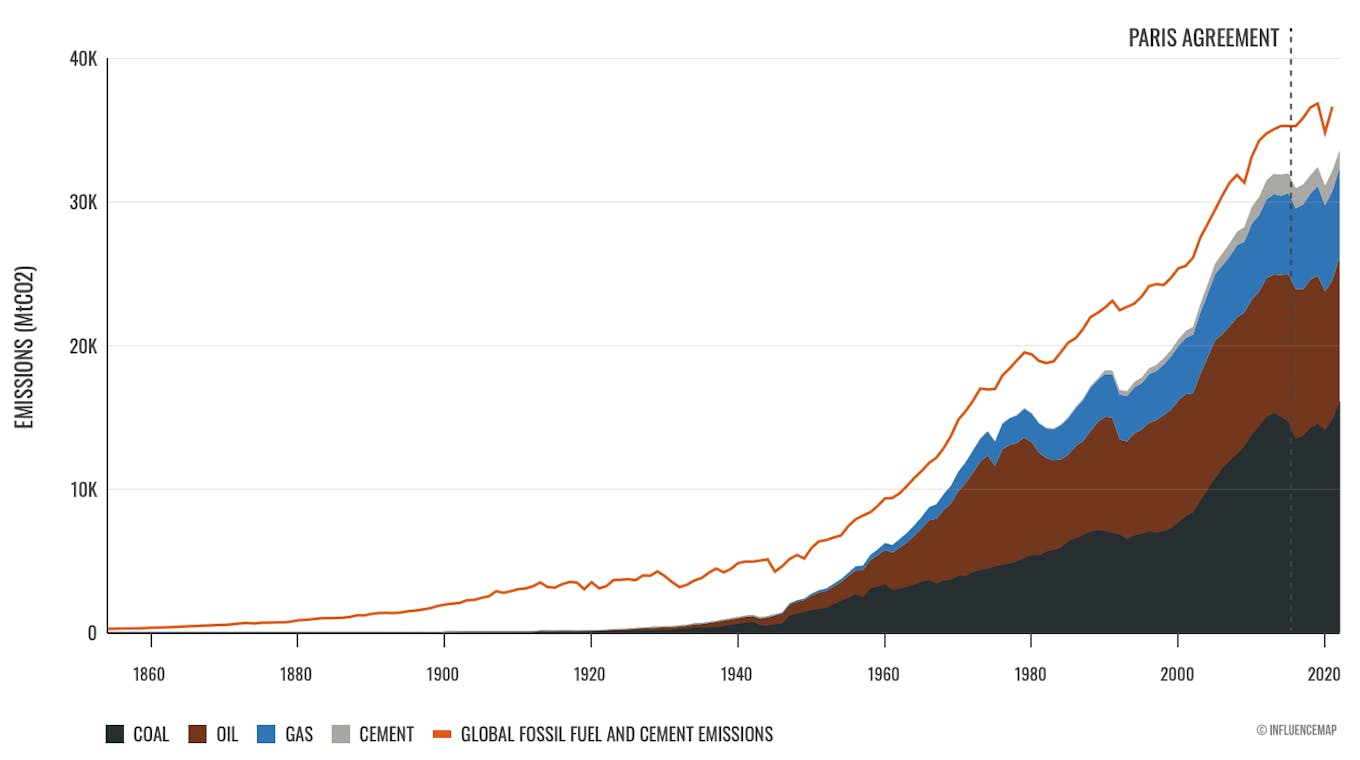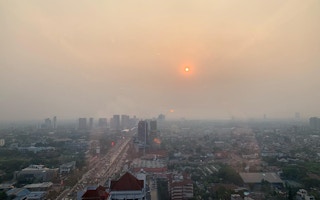The world’s biggest fossil fuels majors have produced more oil, gas and coal since the signing of the Paris Agreement than before it – with the biggest post-2015 increase in dirty energy production originating from Asia, mainly from coal.
To continue reading, subscribe to Eco‑Business.
There's something for everyone. We offer a range of subscription plans.
- Access our stories and receive our Insights Weekly newsletter with the free EB Member plan.
- Unlock unlimited access to our content and archive with EB Circle.
- Publish your content with EB Premium.
A study by InfluenceMap, a London-based climate policy think tank that traces industrial emissions since the 1850s, finds that the majority of global carbon dioxide emissions produced since the Paris climate accord can be linked to a small group of large emitters that have shown no signs of slowing production despite global pressure to decarbonise.
Out of 100 companies featured in the study, 58 produced higher emissions in the seven years since the Paris Agreement than in the same period before it. This increase is most pronounced in Asia, where 13 out of 15 Asian carbon majors in the study ramped up climate-wrecking emissions post-Paris.
Five investor-owned Asian carbon majors and eight out of the region’s state-owned entities, including China’s National Petroleum Corporation and Coal India, are linked to higher emissions post-2016 than pre-2015. Overall, Asian firms’ emissions have increased by 7.4 per cent since the Paris accord compared to the seven years before.

Carbon majors and global CO2 emissions since 1860. The world’s biggest fossil fuels and cement firms account for more than 80 per cent of global greenhouse gas emissions since the industrial revolution. Source: Carbon Majors database / InfluenceMap
North America, home to oil and gas giants including ExxonMobil, Chevron and ConocoPhillips, is the only region where less than half of its carbon majors, 16 of 37, increased emissions after the landmark accord. The emissions drop is attributed to a decline in the country’s coal output.
Asia’s biggest carbon majors
Asia’s biggest 10 carbon polluters, measured by metric tonnes of carbon dioxide-equivalent (MTCO2e) since the Paris Agreement of 2015, are all state-owned.
1. Saudi Aramco
2. National Iranian Oil Company
3. Coal India
4. China National Petroleum Corporation
5. Abu Dhabi National Oil Company
6. Kuwait Petroleum Corporation
7. Iraq National Oil Company
8. Petronas (Malaysia)
9. Qatar Energy
10. Pertamina (Indonesia)
Source: Carbon Majors database
Globally, 57 fossil fuel and cement producers can be traced to 80 per cent of global fossil CO2 emissions since the Paris pact.
Coal, Asia’s climate cryptonite
Rising emissions from Asia in the post-Paris years are primarily linked to coal production. Global coal consumption increased by almost 8 per cent from 2015 to 2022, and four out of the top five coal-consuming nations in 2022 were Asian countries – China, India, Japan and Indonesia, which is the world’s largest coal exporter.
Global pressure on investors to retreat from the most pollutive fossil fuel has led to a drop in emissions from investor-owned coal companies – by 28 per cent – since the Paris accord, while emissions from state-owned firms, particularly those in Asia, have jumped, by 29 per cent.
Saudi Aramco, Russia’s Gazprom, and the National Iranian Oil Company – all of which are state-owned – are the largest three contributers to global emissions globally. All of Asia’s 10 biggest emitting-firms are state-owned (see table), so are more insulated from investor pressure to decarbonise.
The research points to Asia’s heavy dependence on fossil fuels as the world’s most populous region develops its economies. China and India, the region’s two biggest climate polluters, have committed to decarbonise their economies by 2060 and 2070, respectively. But while both countries have rapidly expanded renewable energy capacity, they have also built new coal-fired power plants at a rate that casts doubt over their climate targets. China’s emissions from burning coal account for more than a quarter of global emissions since the Paris Agreement, according to InfluenceMap’s data.

Asian company emissions by commodity type. Coal (black line) is by a large margin Asia’s biggest source of emissions. Source: Carbon Majors database
The study emerges as China and India signal plans to boost coal imports to meet rising demand for power.










